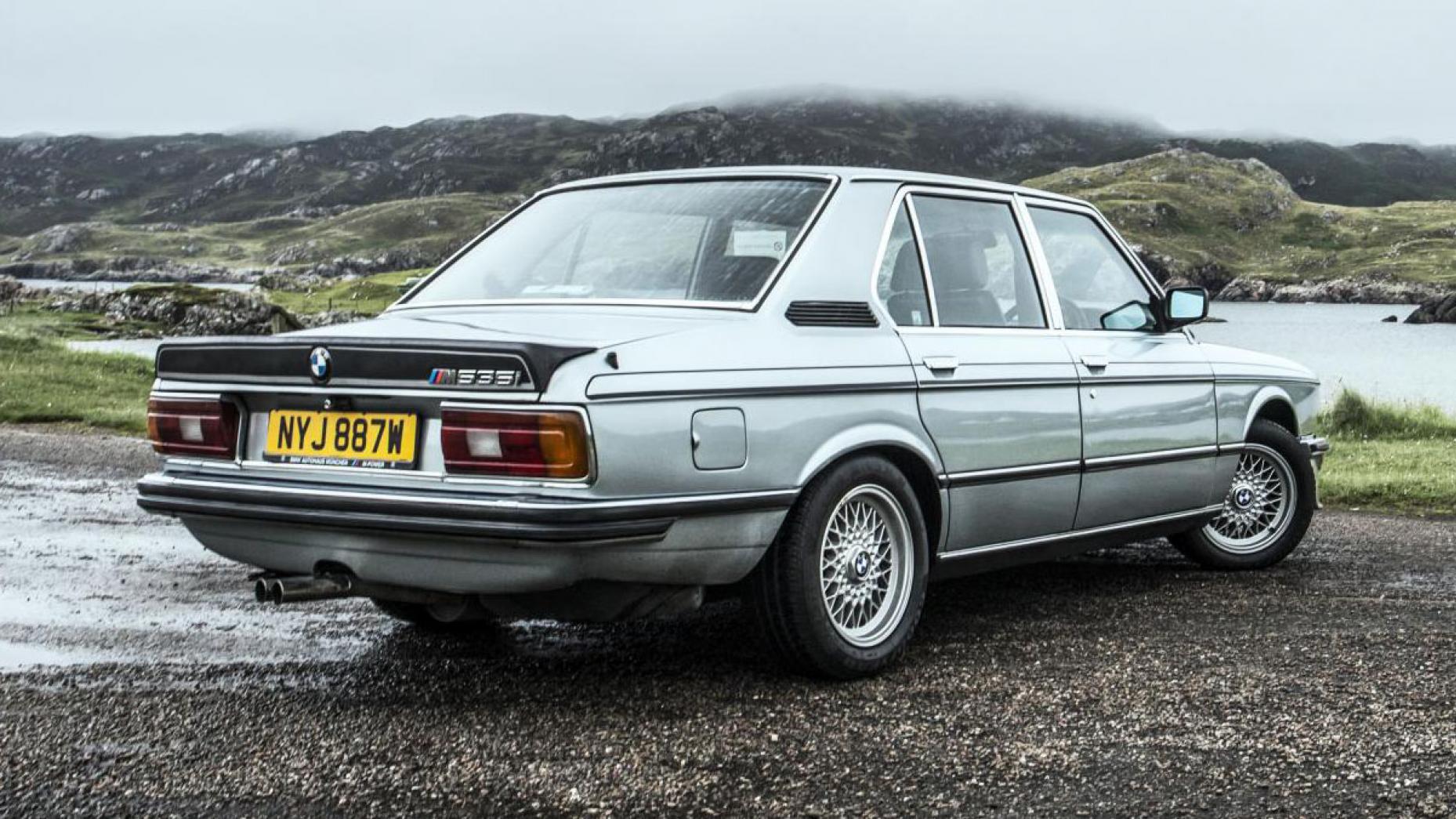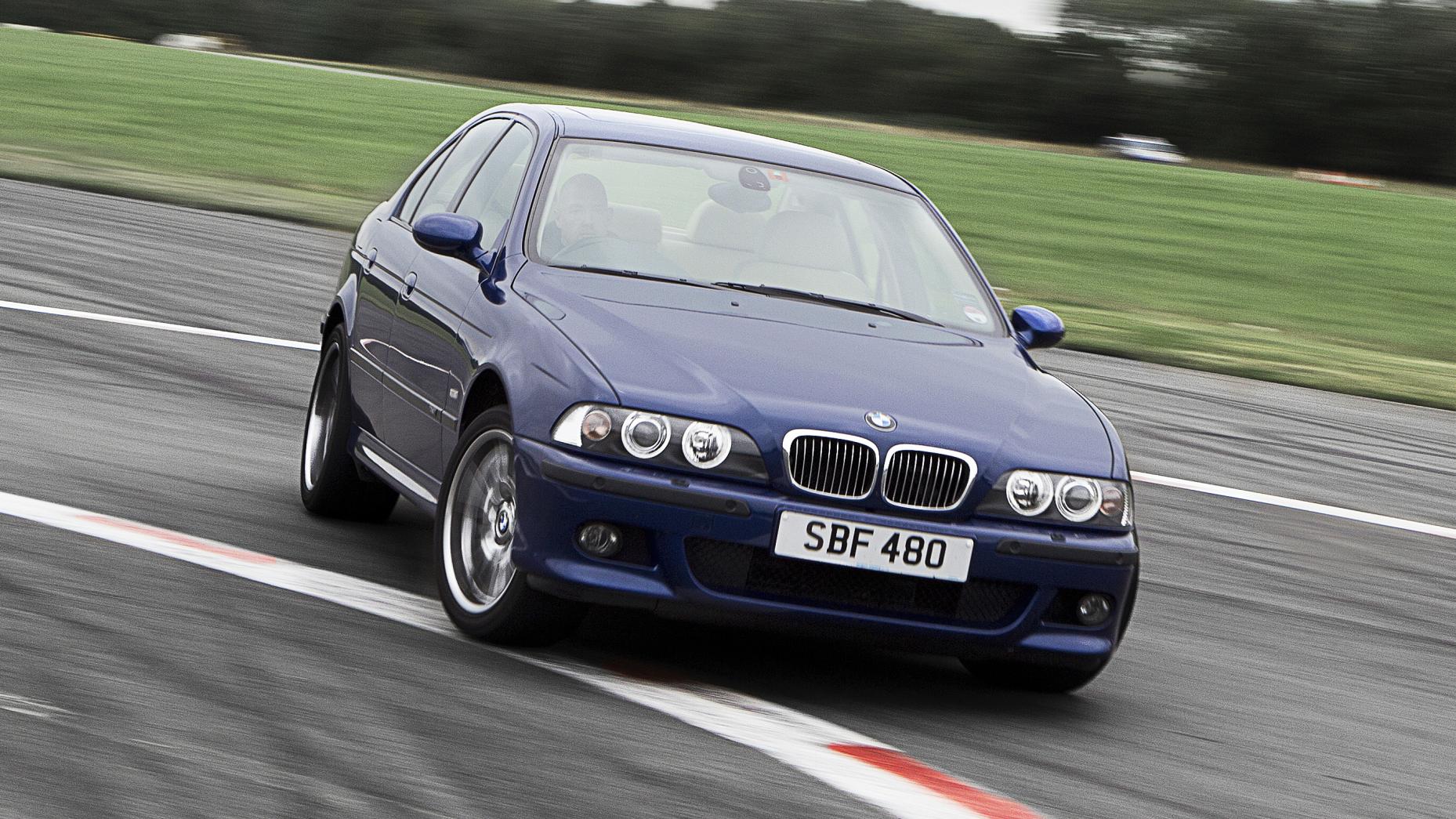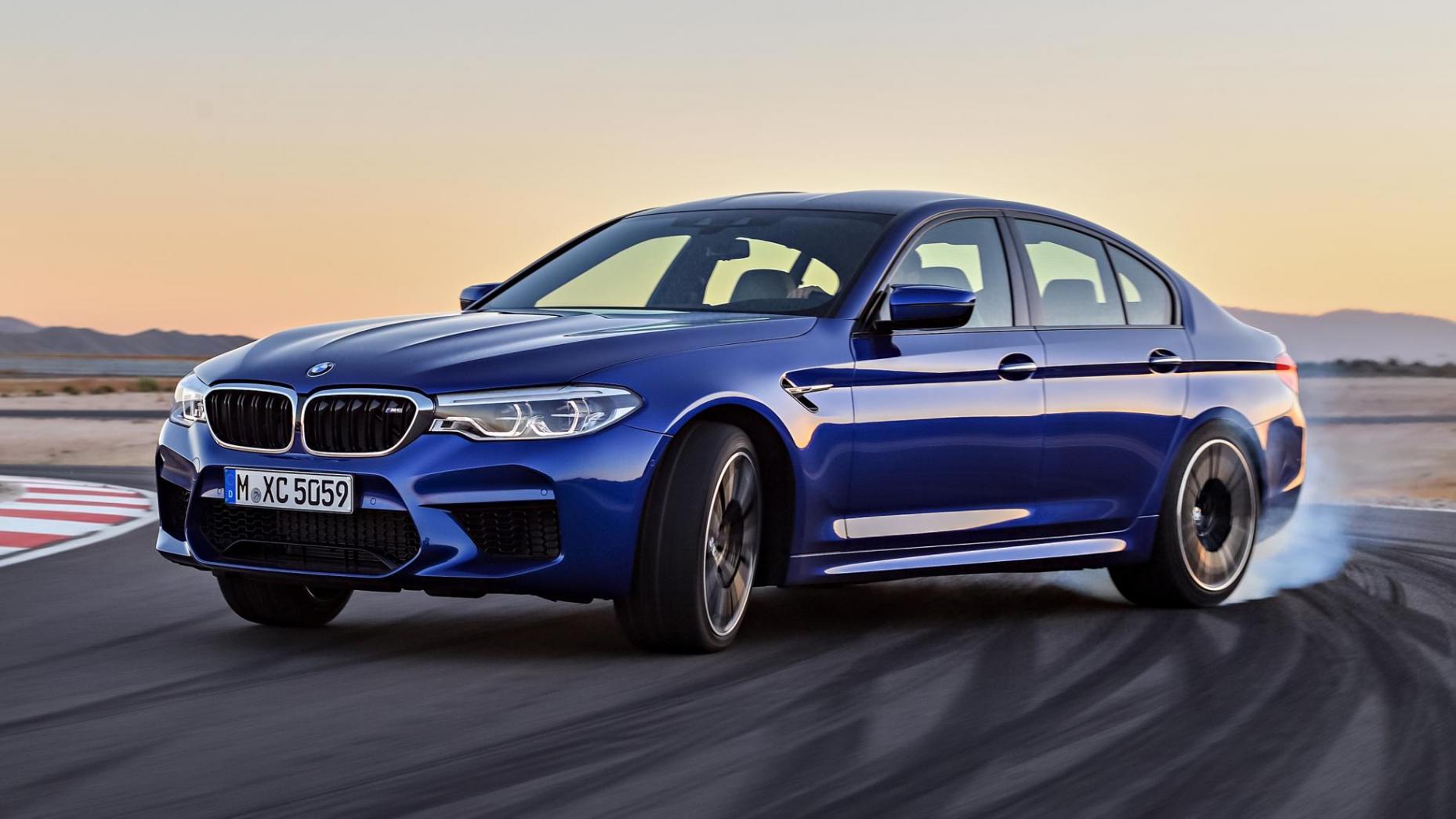Here’s your definitive guide to the BMW M5

BMW M535i: E28
You’re absolutely correct. We begin with something that isn’t a BMW M5. To use movie-franchise parlance, however, the M535i should be considered absolute canon. Launched in 1984, it was considered the best 5 Series of its era.
M showered the humble three-box saloon with tech and power. A 3.5-litre straight six boasted 215bhp and 310Nm of torque, which is exactly* the amount of power it takes to fire up the new M5’s windscreen wipers.
Back in 1984, it was enough to send the humble saloon from 0-100kph in 7.2 seconds. “It was the M Performance automobile of the 1980s,” says BMW. M division didn’t think the M535i went far enough, however. It wanted something purer…
*not exactly
BMW M5: E28
The filtering process took but a year. In 1985, and ‘without any great fanfare or unveiling’ – indeed, the M535i’s spoiler was ditched and all that remained was a little ‘M’ logo – BMW launched the very first M5. If you’re fond of videogame Witcher 3, this is what you’d call a ‘Relic’ item.
The unflappably cool and wonderful BMW M1 donated its 280bhp 3.5-litre six to the new hand-built Fast Five, and Bosch supplied the digital engine electronics replacing the mechanical Kugelfischer petrol injection. Suspension was fully independent, the brakes had four-piston calipers bolted onto them, and it even had sports seats.
So, for your 80,000 DM, you’d have yourself a saloon car – a family car! – that could sprint from 0-100kph in just 6.5 seconds. “Although in the mid-1980s it was frowned upon to brag about their ‘uber’ cars, today the first owners can boast of having owned the very first real BMW M5,” reckons BMW. M built 2,145 of these E28s.
BMW M5: E34
BMW refused to let the M1’s straight-six go to waste, and revised it for this second-generation M5. Unveiled in 1988, M’s focus was laser-sharp. The stroke was extended – upping capacity to 3.6-litres – and some “technical fine tuning” deployed (like a resonance air collector) to produce 310bhp and 360Nm of torque.
This allowed the E34 to hit 100kph in 6.3s. Still not enough. In 1992, the E34 M5 was revised: it featured adaptive suspension, a locking rear-diff, high-performance brakes and the engine’s capacity was increased to 3.8-litres. Power naturally rose, too – 335bhp. For the first time in the M5’s short history then, it was capable of doing 0-100kph in less than six seconds (5.9s). Which meant that in 1992, a big four-door BMW was roughly around as quick as a Ferrari 348. OK, so the 348 wasn’t very good, but it was a Ferrari. Not an executive saloon car.
BMW shifted 11,363 of these E34 M5s (of which less than 1,000 were the supernaturally excellent Touring versions). The M5 was now into its stride, a household name. To use one of many really awful dialogue choices from Batman vs Superman, then, “the bell cannot be unrung”. (Spent the last few years forgetting that film existed? Sorry about that.)

BMW M5: E39
A perfect BMW M car? Reams of words written over the course of the past 20-odd years will say probably that. Back in 1998 though, it was a controversial M car: BMW had ditched the wonderful straight-six from the M1, and instead helicoptered in a V8. A V8, in a 5 Series? World’s gone mad, etc etc.
Except, “the new BMW M5 was expected to once again set new standards”. And BMW set about setting new standards by bludgeoning them with a 400bhp 5.0-litre eight-cylinder engine and an aluminium heavy suspension setup. Woo, and indeed haa.
It used electronically controlled valves, double VANOS… heck, it even had a ‘Sport’ button. There was 500Nm of torque on offer, and BMW reckoned on this E39 being able to crack 100kph in just 4.8s.
BMW piled these high, too: between ’98 and ’02, M built 20,000 cars. No, you’re looking at old E39 M5s for sale online. You should really stop that and do some work.
BMW M5: E60
As though any further indictment were necessary, BMW itself acknowledges this car’s ‘reputation’. “A personality with some rough edges,” it says. TG’s resident snapper Mark will also attest to its… ‘rough edges’.
And yet… V10. It had a V10 engine. Vee-ten!
BMW upped the ante (just how high is that bloody ante?) by fitting the fourth-gen M5 with an engine steeped in motorsport. The blocks for that massive motor came from the same foundry that built engines for Formula 1. At 5.0-litres in size and 500bhp+ in power, this was certainly a step up from the E39.
It had a seven-speed automated manual flappy-paddle gearbox. It had adaptive dampers, it had a head-up display, and it had a myriad of other settings. But one important one was its rev limiter: a heady 8,250rpm. Stop what you’re doing, and go listen to one on your favoured online video channel.
Derestricted, this M5 could hit 330kph, while its V10 won the Engine of the Year award twice, in 2005 and 2006. BMW shifted 19,523 saloon M5s, and 1,025 M5 Tourings. Oh, did we forget to mention? You could buy a V10-engined BMW estate.
BMW M5: F10
While BMW toyed with the idea of making the E39 a turbocharged straight-six (betcha didn’t know that), it finally went all in on boosted engines in 2011. The ‘F10’ premiered with a twin-turbo 4.4-litre V8. And a load more power, obvs.
Over 550bhp, delivered via a dual-clutch auto to the rear wheels, recording a 0-100kph time of 4.4s. Four tenths quicker than its predecessor… but you must also question, at what cost? Does noise excite less than speed? One to ponder, perhaps.
In any case, this M5 was a technological marvel. An active M diff, monster brakes, BMW’s ‘efficient dynamics’ tech that made it 30 per cent more fuel efficient… you know the drill. Though, it was mercilessly tested around the Nürburgring. So there’s that.
This generation also saw a ’30 Jahre’ edition – celebrating 30 years since the E28, and as such, dialled power up to a massive 592bhp. The most powerful ever M5 at the time managed a 0-100kph time in a scarcely believable 3.9s. Woah.

BMW M5: F90
Well, the E63 and RS6 have it, so why not the M5? Enter the ‘F90’ generation M5 – the sixth – and the launch of the first four-wheel-drive version. First revealed in 2017, the ‘standard’ car got a 592bhp version of that tried und tested 4.4-litre twin turbo V8, enabling a 0-100kph time of 3.4s.
The 4WD setup, in our experience, “generally feels nothing but rear-wheel-drive”, that Active M diff and transfer case punting power around where necessary. Traction? Good. Speed? Very good.
The Competition version is even faster – 616bhp, and 0-100kph in 3.3s. It gets the dampers from the BMW M8, and a different geometry to its suspension setup. It effectively replaced the ‘regular’ M5. Just imagine, a car that started off its trajectory with as much power as a Focus ST, now trades punches with supercars.
Unbelievably, BMW launched the M5 CS in January 2021. And – spoiler alert – it offered even more speed and power. The V8 now produces 626bhp and an unfathomable 750Nm of torque. The 0-100kph sprint takes just 3.0s – a tenth off a flippin’ McLaren 675LT. Let that sink in.
Actually, it has sunk. In height. By 7mm. M carved out 70kg of heft from the Competition for this CS, too, and as you’d expect, there are fancy brakes, retuned springs and mounts, the M8 GC’s dampers and other such wonders.
Even some gold bits.

